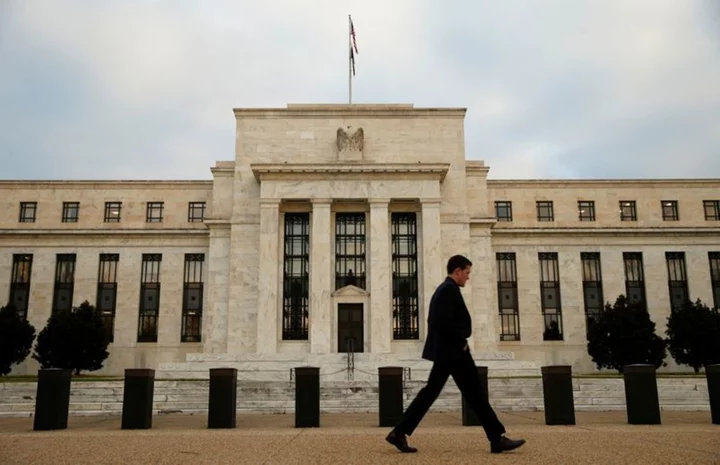By Pete Schroeder
WASHINGTON Big U.S. banks sailed through the Federal Reserve's annual health check on Wednesday, in a vote of confidence for a sector still recovering from turmoil earlier this year and facing an uncertain economic outlook. The Fed's "stress test" exercise showed lenders, including JPMorgan Chase, Bank of America, Citigroup, Wells Fargo, Morgan Stanley and Goldman Sachs, have enough capital to weather a severe economic slump, paving the way for them to issue share buybacks and dividends. The 23 banks tested, which have more than $100 billion in assets each, would suffer a combined $541 billion in losses under the Fed's severe downturn scenario, but would still have over twice the amount of capital required under its rules.
Among the top performers were Charles Schwab Corp. and Deutsche Bank's US operations, while regional lenders Citizens Financial Corp. and US Bancorp were the laggards of the pack.
Fed Vice Chair for Supervision Michael Barr said in a statement the results showed a "strong and resilient" banking system, but emphasized it was just one measure of the sector's health.
"We should remain humble about how risks can arise and continue our work to ensure that banks are resilient to a range of economic scenarios, market shocks, and other stresses,” Barr said.
Goldman Sachs had the highest proportion of losses on commercial real estate loans. State Street posted the highest capital ratio of the globally systemically important banks.
Shares of major banks rose in extended trade following the Fed's upbeat report card, with Bank of America and Wells Fargo gaining around 2% each, while JPMorgan and Charles Schwab both added more than 1%. Citi dipped 0.5%.
The $541 billion in total projected losses included $65 billion in losses from commercial real estate, and $120 billion in credit card losses, the Fed said.
Lenders will now be allowed to return excess capital to shareholders, although analysts expect payouts to be slightly lower this year due to economic uncertainty and impending new capital rules.
They will be able to announce their share buyback and dividend plans after close of trading on Friday, Fed officials said.
SPOTLIGHT ON REGIONAL LENDERS
Under the annual test established following the 2007-2009 financial crisis, the Fed assesses how banks' balance sheets would fare against a hypothetical severe economic downturn.
This year's test follows the collapse of Silicon Valley Bank and two other regional lenders earlier this year. Those banks found themselves on the wrong end of Fed interest rate hikes, suffering large unrealized losses on their U.S. Treasury bond holdings which spooked their uninsured depositors.
That crisis put the spotlight on the performance of mid-sized and regional lenders, who managed to stay above required capital levels but posted some of the lowest capital cushions.
The results may reassure some investors but critics have warned the tests do not probe all potential bank weaknesses, or examine many mid-size lenders - some of whom have experienced liquidity crunches in recent months.
The Fed examined bank balance sheets as they stood at the end of 2022, meaning Wednesday's results do not reflect the fallout from the crisis or efforts lenders have made since to bolster their finances.
Fed officials acknowledged that banks performed relatively well in large part because the scenario actually envisioned interest rates dropping rapidly, allowing large banks to shrink unrealized losses currently sitting on their balance sheet and offsetting traditional loan losses.
The scenario also envisages the U.S. economy contracting nearly 8.75%, driven in part by a 40% slump in commercial real estate asset values, and the jobless rate jumping to 10%.
The test assesses whether banks would stay above the required minimum 4.5% capital ratio - a measure of the cushion banks have to absorb potential losses.
The average capital ratio for the 23 banks was 10.1%, the Fed said. That compares with 9.7% last year, when the central bank tested 34 lenders against a slightly easier scenario.
(Reporting by Pete Schroeder; editing by Michelle Price and Deepa Babington)

